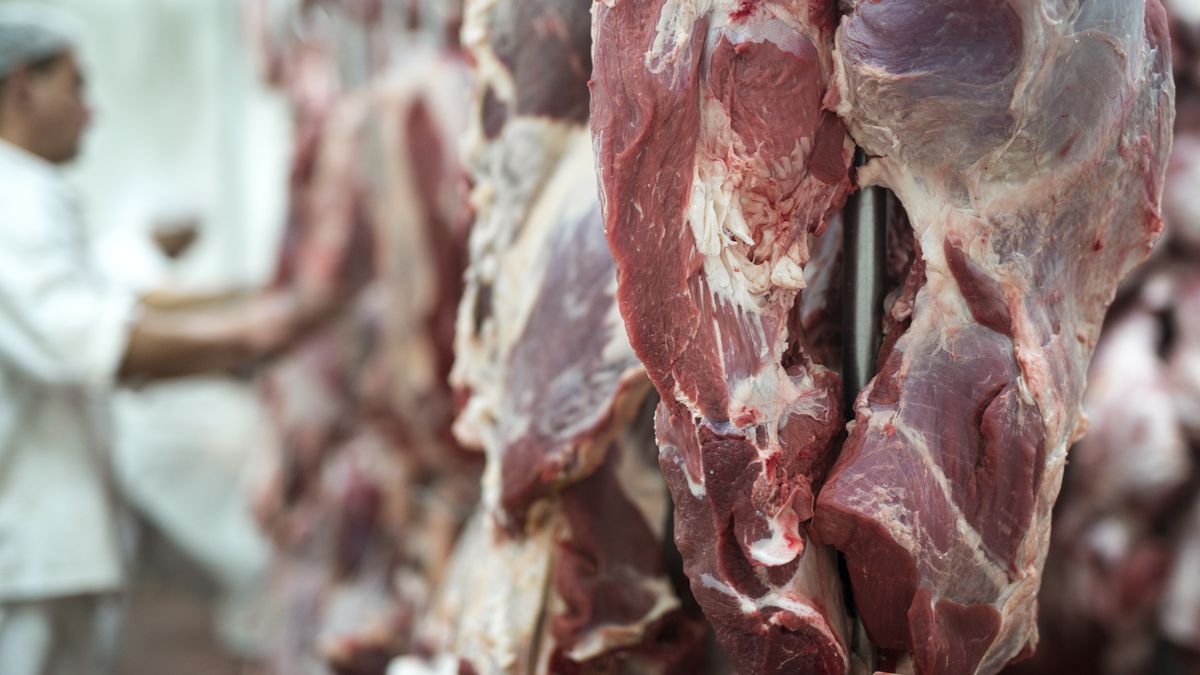It is important to remember that the drought In recent years, it accelerated the liquidation of farms and overloaded the market at times when there was a lot of money in circulation: this combo made meat have attractive values based on relative prices, which is why buying meat was for a long time a great convenience. .
The numbers confirm this statement. According to Chamber of Industry and Commerce of Meats and Derivatives of the Argentine Republic (CICCRA), production fell 7.6% during the first quarter of the year in the interannual comparison. 1.05 million head of cattle were slaughtered, which implied a year-on-year drop for the fourth consecutive month, marking one of the lowest activity levels in the last forty-five years.
One of the problems that most suffocates the local industry is the drop in consumption in a context of limited availability of finance. The drought left a scenario of lower meat supply due to the reduction in calves and the liquidation of females (which are recovered with heifers) and this has an enormous cost that directly influences lower meat production.
If there is less meat available, prices rise and in the midst of the adjustment suffered by the population, the drop in consumption becomes evident. According to CICCRA data, comparing the first quarter of 2024 with the previous cycle, there was a drop of 18.5%, which implied going from 52 kilos last year to 42 kilos currently.
Everything that is happening was warned by the industry itself during the last two years, only now it suffers doubly because the increase in costs, supplies and fuel is added in a context in which salaries yield less and less. This is felt by the entire chain, from the butcher shops to the refrigerators.
The industry is going through a “negative cycle”
No productive activity is measured only by stages; It is about evaluating what happens over longer periods in which not only biological issues intervene, but also political, economic and social ones. There are times when there is greater profitability and others when there is less.
In this sense, Victor Tonelliconsultant and expert in the livestock sector, assured Ambit that “all economic activities are going through a very complex moment. In the case of the refrigeration industry, what happens is that the cost scheme – which was very backward – was updated with an explosive model, where the figures multiplied in pesos with a dollar that was ironed out after the assumption of Javier Milei. The only thing we have is a 2% monthly update with accumulated inflation that, including April, exceeds 70% and a drop in the dollar bill of 15%. It is very complex and to this we must add the liquidation of the farm in the last two years that allowed the slaughterhouses to buy animals in volume and quality at prices that worked for them. Today all that has changed, because the work is less and because “The dollar, which was good in December and relatively good in January, is now no longer good because it was delayed.”
As he was able to reconstruct Ambit After speaking with several representatives of the meat industry sector, “so far there is no crisis and no problems in the payment chains. Many exaggerate when they talk about suspension of personnel.” Regarding this point, Javier PeraltaSecretary of the Federation of Regional Refrigeration Industries of the Argentine Republic (FIFRA), assured this medium that “These days, joint ventures are being discussed, but the suspension of personnel is not being considered.”
The sector demands changes in livestock policy
With a depressed export market and the local market in decline, there is no doubt that it is necessary to take some type of short-term measure for the meat sector. A source consulted by this medium linked to the international market considered that “an export dollar of approximately $1,100 would be needed to have an equation similar to the one that existed a few months ago.”
Without fanfare, the meat sector is warning that if everything remains the same, Maintaining sources of employment can be a problem in the second half of the year and to avoid these inconveniences, demand a greater movement in the exchange rate or a reduction in withholdings. The high international prices of a few years ago are not going to be repeated in the short term, therefore it will be the local agricultural policy that corrects the course. The improvements are not going to come from outside but rather we will have to roll up our sleeves and start making economically based decisions so that the activity is sustained.
Export operators maintain that Argentina became expensive in dollars, that foreign trade fell in volume and value and after the increase in internal costs they are left out of the international market. Today’s photo is not encouraging but it is not apocalyptic either and serves to remind us that there are things that should change, that the Government knows (and promised to resolve) so that livestock farming grows in productivity and exports.
Source: Ambito




